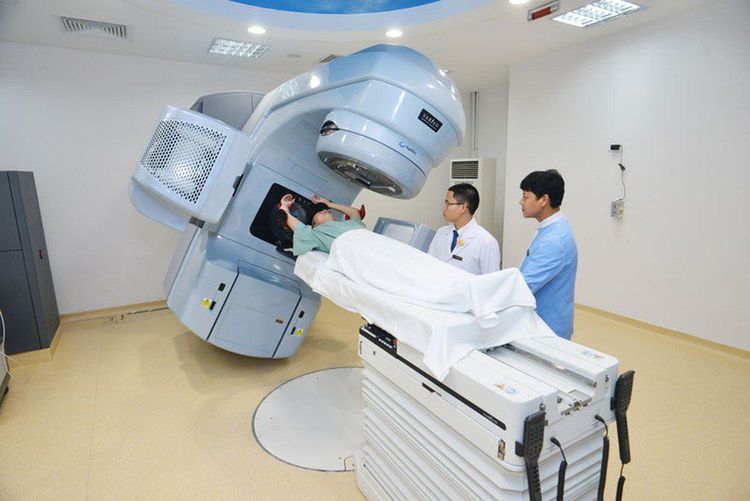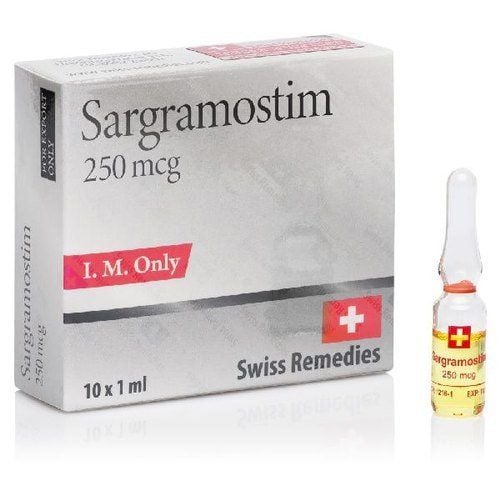This is an automatically translated article.
Neuroblastoma is a type of cancer that develops from immature nerve cells and is found in several areas of the body such as in and around the adrenal glands, abdomen, and in the chest, neck, and proximal Spine. The disease is common in children under 5 years of age and rarely occurs in older children.1. What is neuroblastoma?
Neuroblastoma is a disease in which malignant (cancerous) cells form in neuroblasts (immature nerve tissue) in the adrenal glands, neck, chest, or spinal cord.
Neuroblastoma usually begins in the nerve tissue of the adrenal gland. The adrenal glands make important hormones that help control heart rate, blood pressure, blood sugar, and how the body responds to stress.
Neuroblastoma usually begins in the fetal stage and can be diagnosed in the first month after birth or discovered when the tumor begins to grow and cause symptoms or is sometimes found seen on fetal ultrasound.
By the time neuroblastoma is diagnosed, the cancer has usually spread to the lymph nodes, bones, bone marrow, and liver; Childhood neuroblastoma metastasizes to the skin.
2. Neuroblastoma stages
Today, two systems are used to stage neuroblastoma. The key difference between the two systems is whether disease stage can be used to help determine a child's risk factors before starting treatment.
The International Neuroblastoma Risk Group Staging System uses results from imaging tests (such as CT or MRI scans and MIBG) to help decide on staging. Your doctor can determine the INRGSS number before starting treatment. The International Neuroblastoma Staging System uses results from surgery to remove a child's tumor instead of an imaging test. The stages and risk groups of neuroblastoma are complex and can be confusing. Therefore, if you are unsure what stages of the disease mean for your child, ask your doctor to explain in a way that is easiest for you to understand.

U nguyên bào thần kinh là bệnh trong đó các tế bào ác tính (ung thư)
3. Diagnostic methods for glioblastoma
Doctors use many tests to find or diagnose cancer. In addition, tests to help doctors find out if the cancer has spread to another part of the body and to look into what treatment is best for the patient.
For most tumours, a biopsy is the most common test done to make sure a person has cancer. For a biopsy, your doctor will take a small sample of tissue from the tumor for testing.
Your doctor will consider the following factors when choosing which test to make a diagnosis:
The type of cancer your doctor is suspecting Signs and symptoms of the disease Age and overall health Test results According to the diagnostic criteria for glioblastoma developed by the International Neuroblastoma Risk Group Task Force, it is concluded that the patient has this disease when :
Neuroblastoma cells are detected in the bone marrow and there are major catecholamines produced by the nervous system with higher than normal levels in the urine, or Biopsy results the tumor shows neuroblastoma cells In addition to the physical examination, the following tests may be used, however, not all of the tests listed below will be used by the individual patient. performed for all patients.
Blood test and urine test . A complete blood count (CBC) is tested to find out if you have signs of anemia, low red blood cells, and liver and kidney function. In addition, a blood clot test may also be ordered. Urine test to check for traces of cancer produced by the neuroblastoma tumor. Urinary catecholamine metabolites were found in more than 85% of patients with neuroblastoma. The catecholamine metabolites commonly measured are homovanillic acid (HVA) or vanillylmandelic acid (VMA). Biopsy. A biopsy is taking a small amount of tissue for examination under a microscope. A histopathologist evaluates cells, tissues, and organs to diagnose disease. The type of biopsy done depends on the location of the tumor. If the surgeon determines that the entire tumor can be removed, the entire tumor is usually removed rather than doing a separate biopsy. Genetic research. Neuroblastoma cell DNA tests are used to look for changes in the oncogene gene MYCN, which is responsible for cell growth. Having more than 10 copies of this gene is called amplification, which is associated with tumors that are growing and spreading rapidly, making treatment more difficult. For patients with a family history of neuroblastoma, genetic testing to determine if a gene mutation in the PHOX2B or ALK gene is the cause. Computed tomography (CT or CAT) scan. A CT scan takes pictures of the inside of the body using X-rays taken from different angles. Magnetic resonance imaging (MRI). An MRI uses a magnetic field, not X-rays, to create detailed images of the brain and spine. MRI can be used to measure tumor size. Scan MIBG. MIBG stands for meta-iodobenzylguanidine. Neuroblastoma cells absorb this protein. When the protein is bound to a small amount of radioactive iodine, it can be used to find neuroblastoma in the bones, bone marrow, and other parts of the body. Because a child's thyroid will also absorb radioactive iodine, iodine is usually given a few days before the MIBG scan to protect the thyroid. Positron tomography (PET) or PET-CT scan. PET scans are often combined with CT scans, known as PET-CT scans. This test is usually done for patients who have a tumor but cannot use a MIBG scan.

Trung tâm Ung bướu xạ trị - Bệnh viện Đa khoa Quốc tế Vinmec là một trong những trung tâm tại Việt Nam được trang bị đầy đủ các mô thức điều trị ung thư
4. Glioblastoma treatment
Treatment of a child with glioblastoma requires a multidisciplinary care and treatment team that includes a treating physician, child life specialist, nutritionist, physical and occupational therapist , social workers and counselors. To make a treatment plan, the doctor will rely on the following factors:
Size and location of the tumor Cancer has metastasized yet Risk classification Possible side effects Family wishes Overall health of the patient 4.1 Surgery Surgery is the removal of the tumor and some healthy tissue around the tumor, which is done during surgery. If the cancer has not spread, surgery can sometimes remove the entire tumor. Unfortunately, however, most neuroblastomas are not detected until the cancer has spread. In this situation, your doctor will try to remove as much of the tumor as possible during surgery.
4.2 Chemotherapy Chemotherapy is the use of drugs to kill cancer cells, by stopping the cancer cells' ability to grow and divide. Systemic chemotherapy is delivered through an intravenous infusion in the arm into the bloodstream to reach cancer cells throughout the body. Chemotherapy schedules usually include a specific number of cycles given by a doctor over a certain period of time.
Most children with neuroblastoma will need chemotherapy. Chemotherapy may be used as the primary treatment for neuroblastoma. Or, it may be done before surgery to shrink a tumor or after surgery to kill any remaining cancer cells.
4.3 Radiation Therapy Radiation therapy uses high-energy X-rays or other particles to kill cancer cells. The most common type of radiation treatment is called external-beam radiation therapy.

Bệnh viện Đa khoa Quốc tế Vinmec sử dụng máy xạ trị ung thư hiện đại nhất Việt Nam
4.4 Bone marrow/stem cell transplant A bone marrow transplant is a medical technique in which diseased bone marrow is replaced with highly specialized cells, called hematopoietic stem cells. Hematopoietic stem cells are hematopoietic cells found both in the blood stream and in the bone marrow.
Today, this technique is often referred to as a stem cell transplant, instead of a bone marrow transplant because it uses blood stem cells for transplantation, rather than actual bone marrow tissue.
4.5 Retinoid Treatment Retinoids are the collective name for a group of chemicals in the form of Vitamin A that help certain cells mature into normal cells. Research shows that children who receive retinoids have improved survival compared to children who do not receive this treatment.
4.6 Immunotherapy Immunotherapy is used to strengthen the body's natural defenses against cancer. Methods that use compounds made by the body or in a laboratory to boost, target, or restore immune system function.
Vinmec International General Hospital is one of the hospitals that not only ensures professional quality with a team of leading medical doctors, modern equipment and technology, but also stands out for its examination and consultation services. comprehensive and professional medical consultation and treatment; civilized, polite, safe and sterile medical examination and treatment space.
Customers can directly go to Vinmec Health system nationwide to visit or contact the hotline here for support.
MORE:
How do you tell your child about cancer? The link between stress and cancer Psychotherapy for cancer patients: What you need to know













